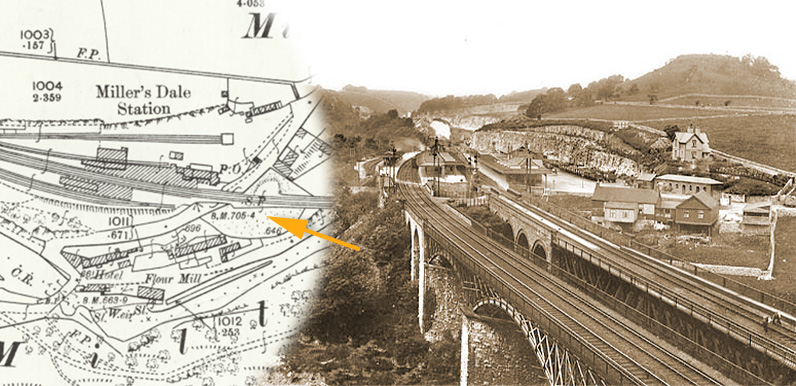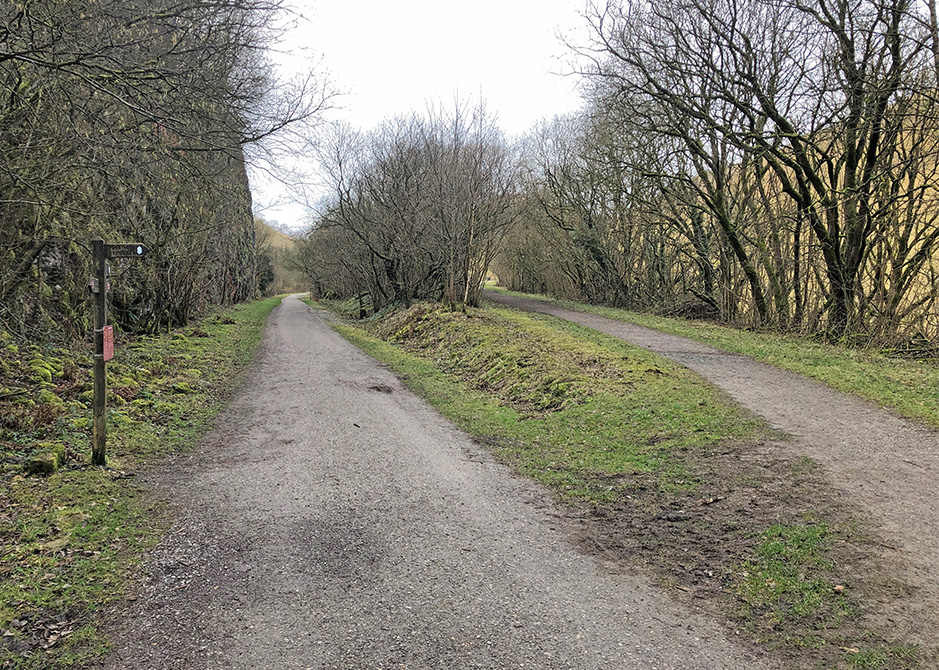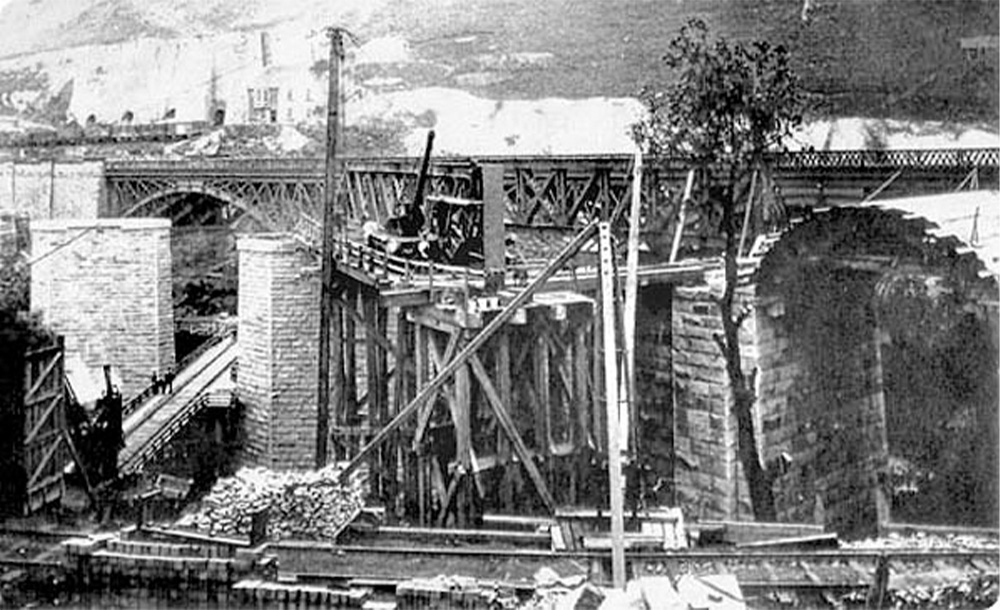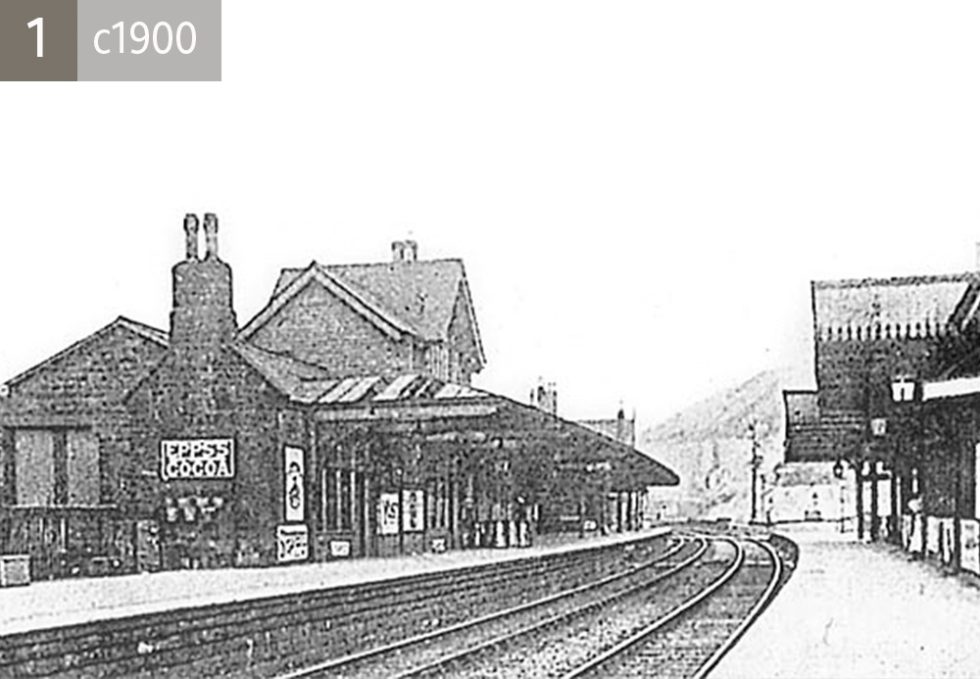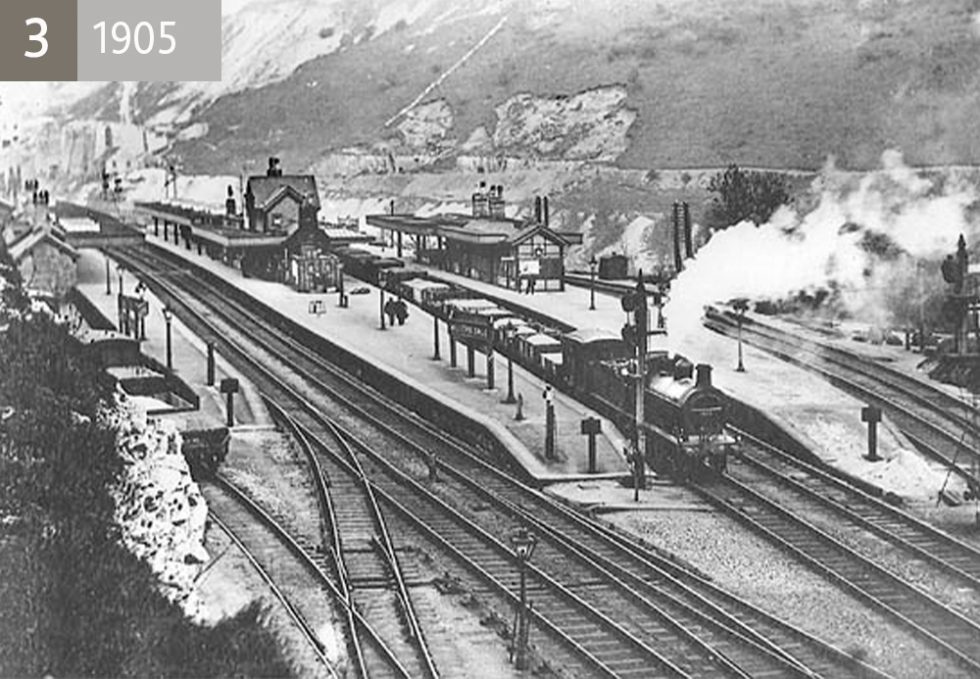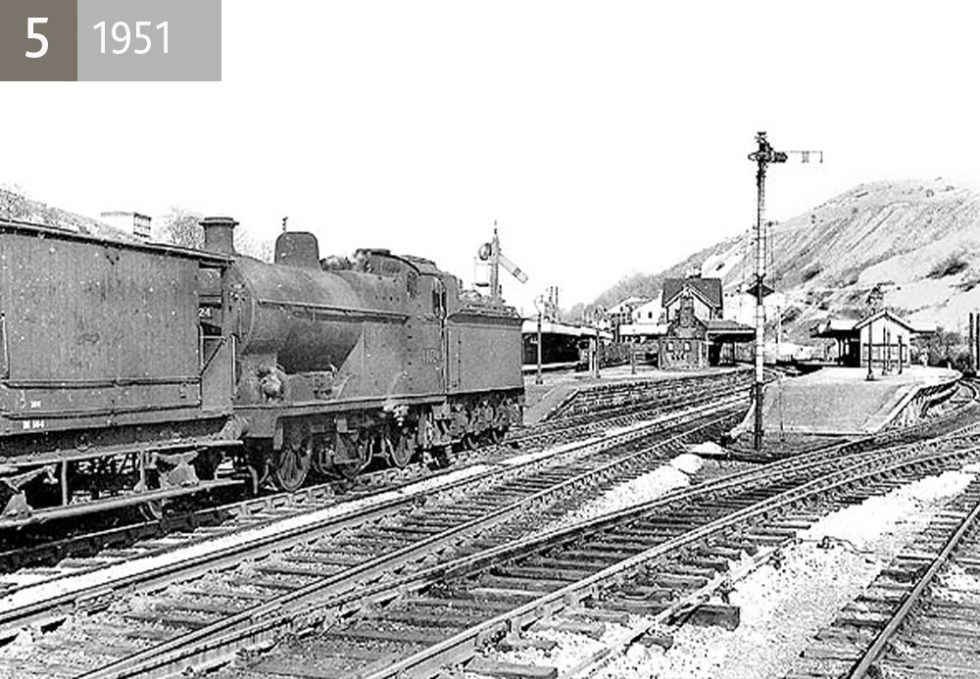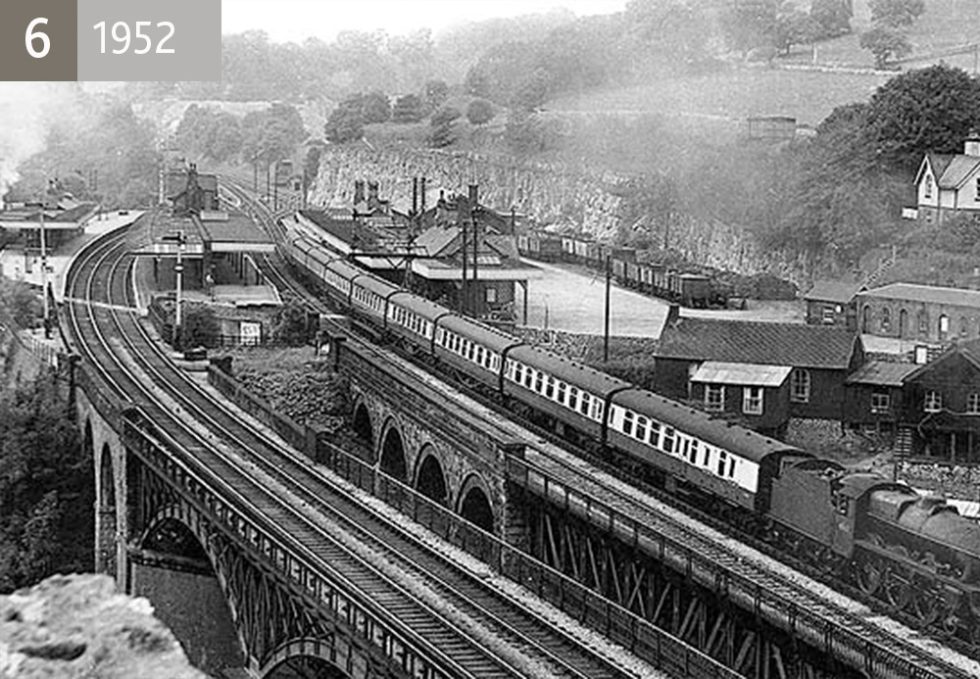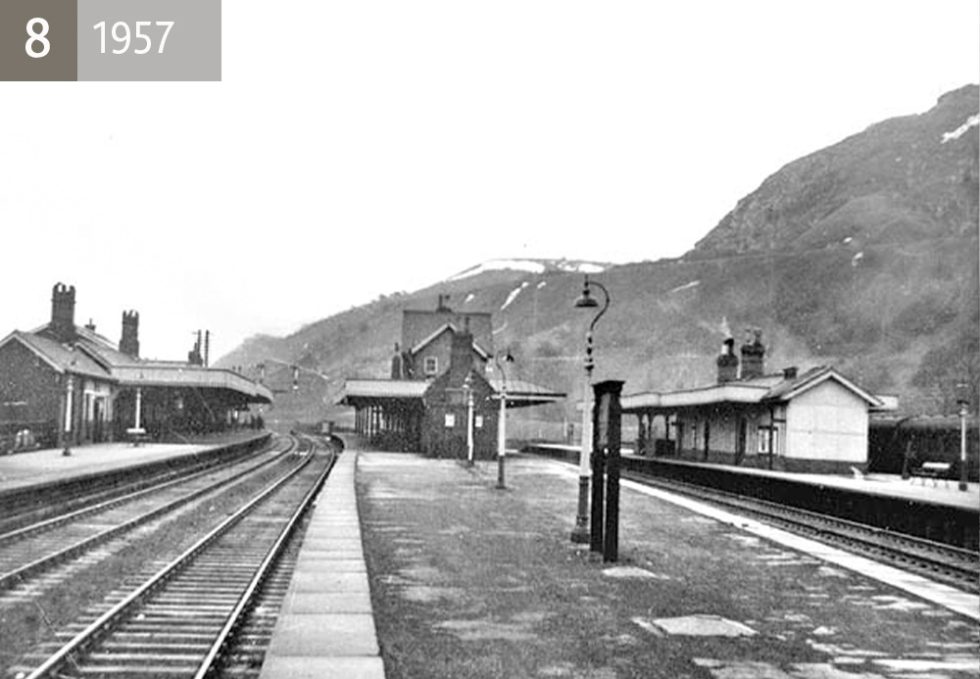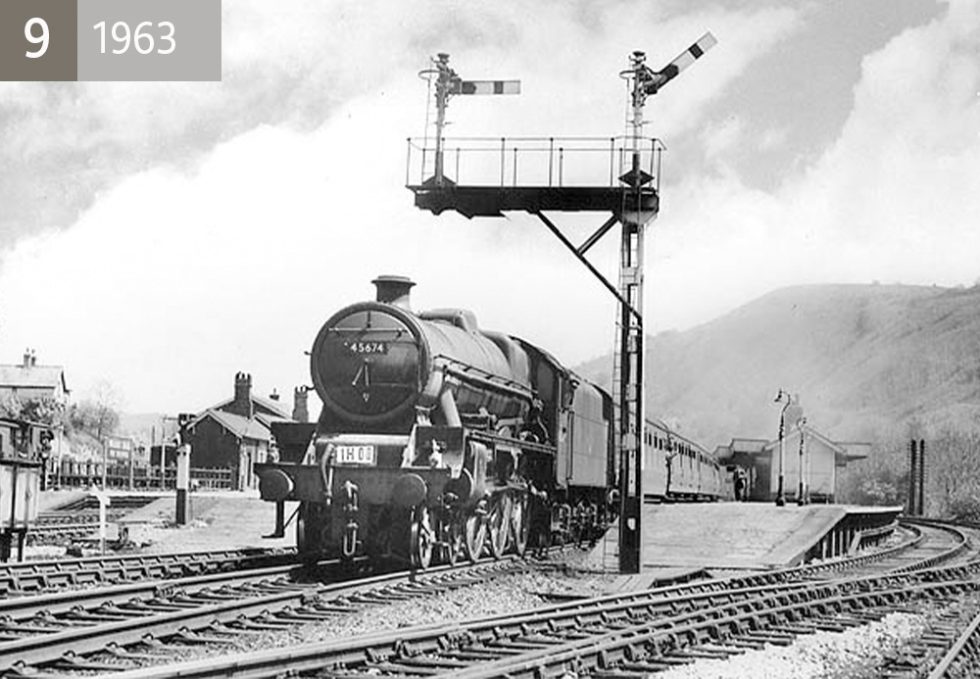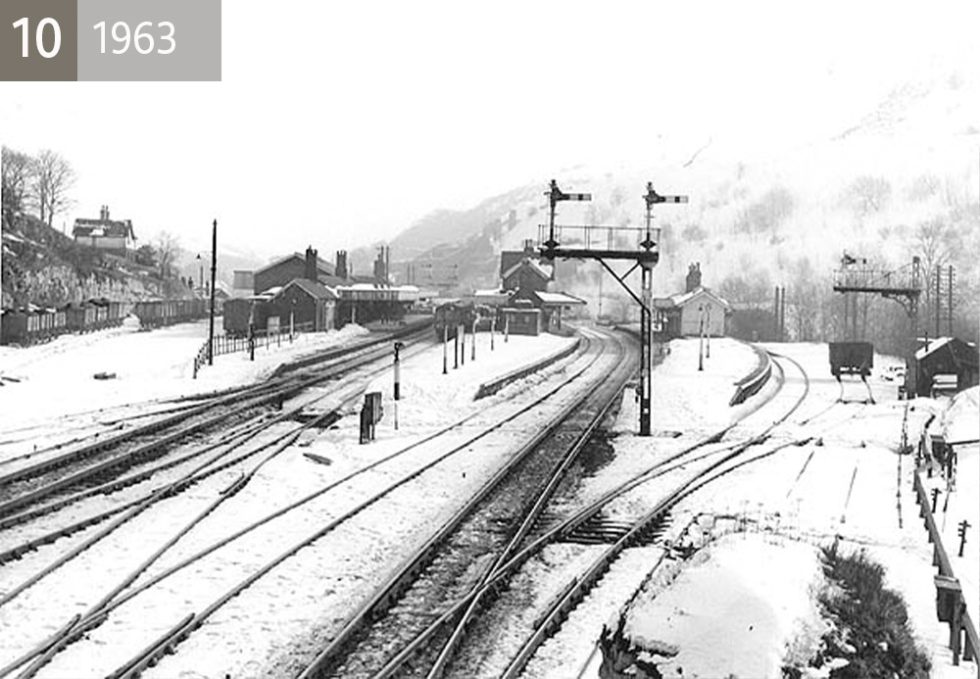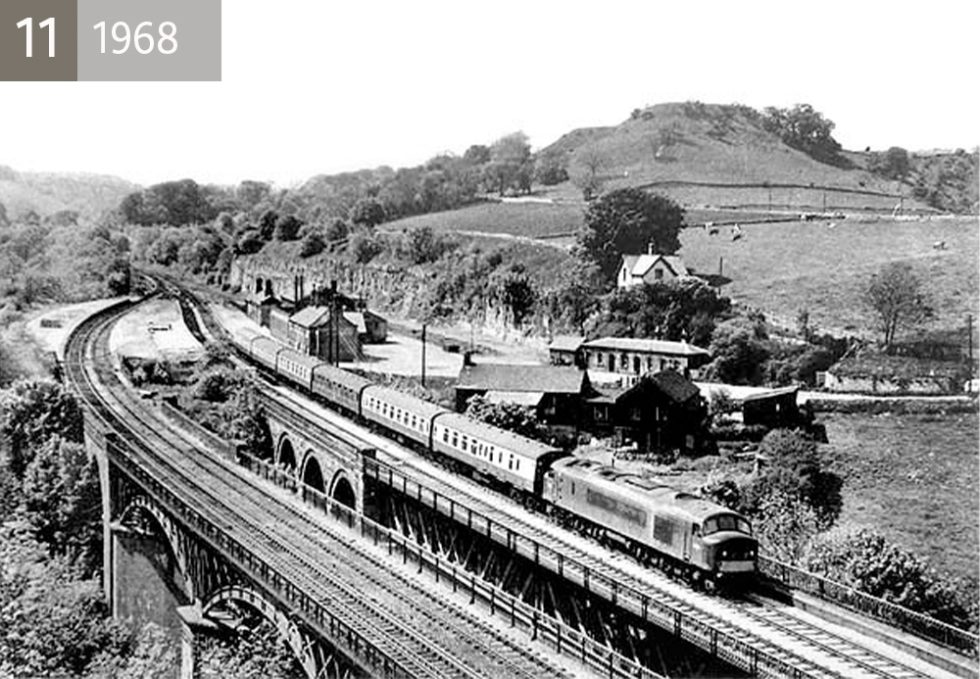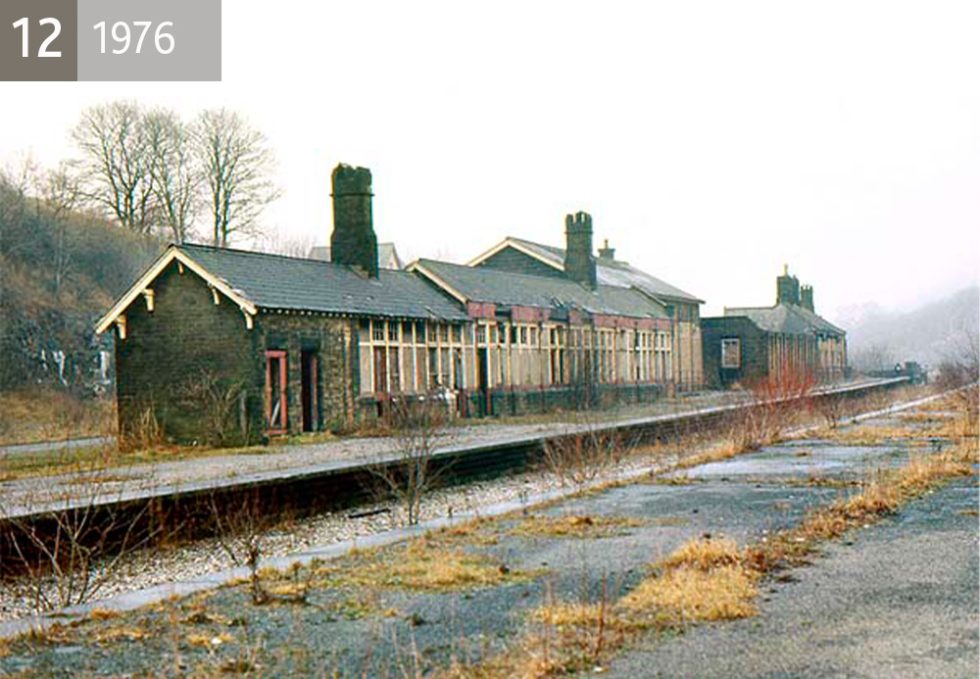Above: The map on the left dates back to the 1890s and shows only one viaduct. The photo shows men at bottom right working to install track on the second viaduct so must have been taken around 1905. The arrow shows where the photo was taken.
Situated above the small village of Miller’s Dale, the station opened on 1st June 1863. Despite its rural setting, it would become one of the most important links in Midland Railway’s route between London and Manchester (view short history of the line).
For the first four years, the line ran between Ambergate (near Cromford) and Buxton, passing six newly-built stations along the way. (Today’s Monsal Trail runs along an 8.5 mile section of this route.) But MR’s plan was to continue from Buxton all the way to Manchester, creating a mainline route that would link the northern city with London.
Above: The diversion to Peak Forest is on the right, just beyond Miller’s Dale Station towards the Buxton end of the trail.
An alternative route
When a rival railway company refused to allow MR to share their Buxton to Manchester line, they were forced to find an alternative route. Which they did by creating a diversion from just beyond Miller’s Dale through Peak Forest and New Mils, which was completed in 1867.
This meant that Miller’s Dale became an important interchange for anyone travelling to and from Buxton, and south to London and other important cities such as Derby. This generated an ever-increasing number of passengers and freight visiting this fairly remote spot.
The station was initially constructed with one viaduct. But the increase in traffic, as well as the resulting profits being made by MR, prompted the company to build a second one to carry an additional pair of tracks in 1906.
Above: Click the ‘Now’ button – or drag the green slider – to see where the second viaduct was constructed. The Monsal Trail runs along the older one. The 1906 viaduct is now blocked.
Above: Work on the second viaduct started around 1905 (click to enlarge).
The station was rebuilt at the same time, with five platforms. Platform 1 was on the north side, close to the main station buildings, with a booking house, waiting rooms and parcels office, as well as Miller’s Dale village post office.
Platforms 2 and 3 shared an island which included waiting rooms, and a two-storey station master’s house. Platforms 4 and 5 were also on an island with their own waiting rooms. Platform 5 was purely for the Buxton shuttle service, and ended in buffers. All the platforms were linked by subway and were provided with large canopies to shield passengers from the often poor weather.
Push & pull shuttles
In 1923 the line became part of the London Midland and Scottish Railways (LMS). ‘Push and pull’ trains were introduced on the Buxton Shuttle (see photo 7 below) to make turnarounds easier. And in 1948 the station became part of the nationalised British Railways.
The station remained busy during the 1950s and early ’60s, with train-spotters able to enjoy watching the luxurious Pullman Expresses steam through on their intercity journeys (although they didn’t stop).
In 1963 Dr Beeching recommended the closure of all the small stations on the line, and four years later Miller’s Dale Station finally succumbed, with the track being lifted the following year.
Photo gallery
Click on any photo to enlarge and use the arrow keys to scroll through. (Photos courtesy of Disused Stations.)
Other Monsal Trail stations : Bakewell : Hassop : Great Longstone : Monsal Dale : Blackwell Mill Halt

